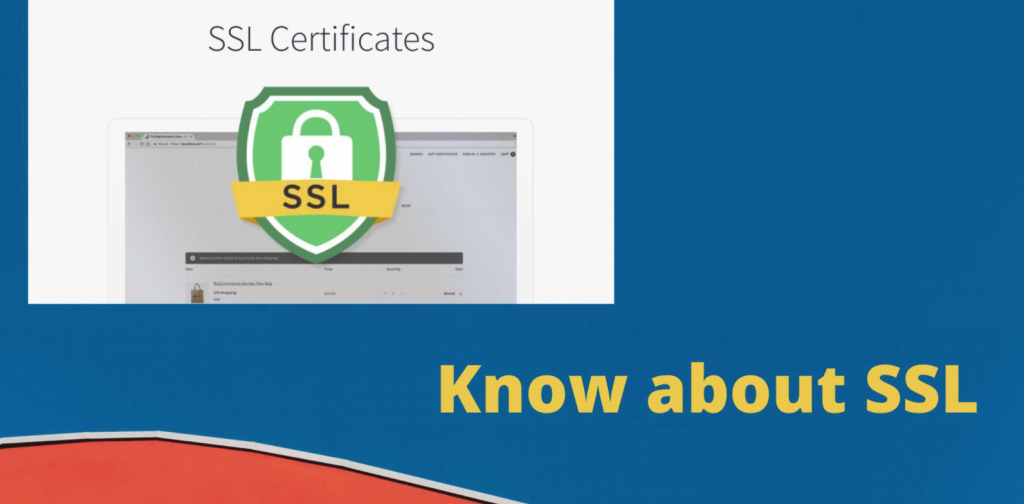SSL Full Form What is Secure Sockets Layer
SSL full form is Secure Sockets Layer. Let’s know more about it in detail.
SSL is a Netscape protocol for building encrypted connections between a web server and a web browser. The term ‘sockets’ also refers to a socket system for the exchange of information between a client and a server system, Either in-network or between processes of the same device. SSL is an industry-standard that transmits confidential information securely And securely such as credit card numbers, social security numbers, and Internet login codes. Many websites use it to verify their online customer transactions.

History
The real introduction of Secure Sockets Layer was introduced in the early 1990s. With the help of Netscape Communications Corporation to acquire by HTTP. Which sends its records as simple text to the Internet. The first version to be released was 2.0 which gained prominence despite some structural and legal flaws.
The Internet Engineering Task Force (IETF) reduced SSL for use on the web in 2015 And has already been replaced by the Transport Layer Security (TLS) protocol. However, TLS and SSL are not compatible, and TLS is compatible with SSL 3.0 back.
Features Of SSL
- SSL encrypts the network connections above the transport layer, which is part of the network connection above the system cable.
- SSL works with an asymmetric cryptographic machine, where an online browser creates a public key and a private key.
- A common public key, called a certificate signing (CSR) request, is placed on file. The private key is for the recipient only. Makes data, shared between users and sites, unreadable. It uses encryption technology to manipulate data on the go, stopping hackers from reading it.
- For this SSL your data and id and your bank login password, credit card details, contact login details, and other financial information, etc. remains secure and encrypted. For example, when shopping online, the information you share with websites remains secure.
- SSL is a precursor to Transport Layer Security (TLS), a secure Internet data transfer protocol.
- All the websites that has the SSL makes a lock icon on the left corner of the adress bar.
- The Internet Engineering Task Force suspended both SSL 2.0 and 3.0 in 2011 and 2015 respectively. And replaced it with the Transport Layer Security (TLS) protocol.
Advantages
- Encryption -The data transfer that takes place on a website using SSL is encoded to ensure the security of sensitive information. When data is encrypted, intruders find it difficult to get inside information.
- Server Authentication – SSL provides authentication, which means that Internet data transfer is guaranteed via the appropriate servers. Participants often pretend to be your website and focus on your customer information. Using appropriate public infrastructure (PKI) and obtaining an SSL certificate from a trusted SSL provider will prevent this.
- Trust – Customers trust sites that use SSL. This makes traffic available on site. Additionally, if the site includes online payments and allows for membership. Information security measures should be in place to protect your customers’ data.
- Security – When a customer receives sensitive email theft, it contains a link to the actual copy of the actual website. And when the customer uses their information on the website, it may be accessed by an unauthorized user. But having an SSL certificate cancels their access and thus protects the customer from email phishing critically unauthorized.
Disadvantage
- The SSL causes extra slow for the websites to load. So, it may be an issue for some users.
- The adding of an SSL Certificate to the website causes extra cost. This also may lead to a disadvantage.
- This SSL effect in the performance as it will fetch extra data. And thus will slow down the internal traffics.
Types of SSL
- Single domain: SSL certificate for one domain only applies to one domain.
- Wildcard: As a single domain certificate, the wildcard SSL certificate only applies to one domain. But here it includes the sub domains.
- Multiple domains: As the name suggests, most SSL certificates can be applied to many unrelated domains.
Conclusion
In conclusion, SSL is a must-have feature for any website. Especially if you use any feature like a transaction or login. Also, this SSL gains the trust of the users.
I Hope, You liked the article, about SSL Full Form. So, if you liked it Share it with your friends. Also, do not forget to comment down any suggestions on the SSL Full Form.
Source: simitech






